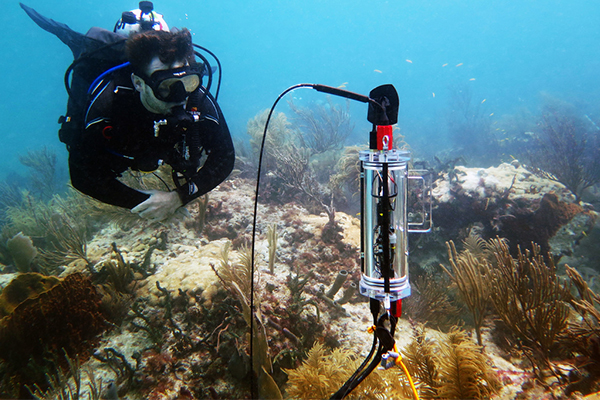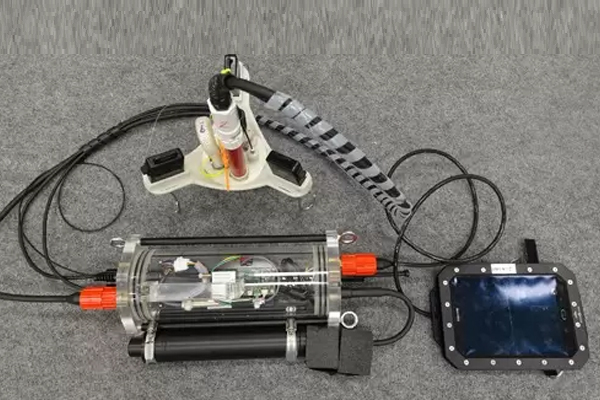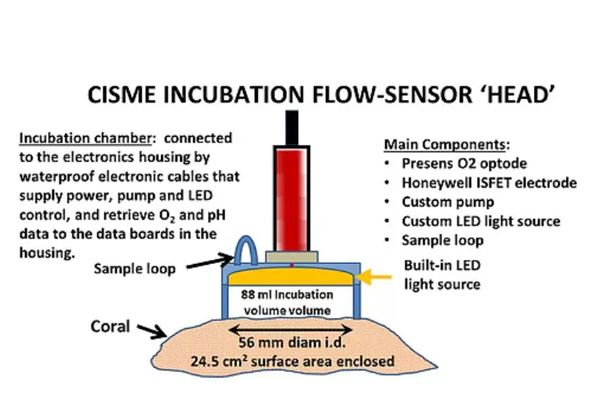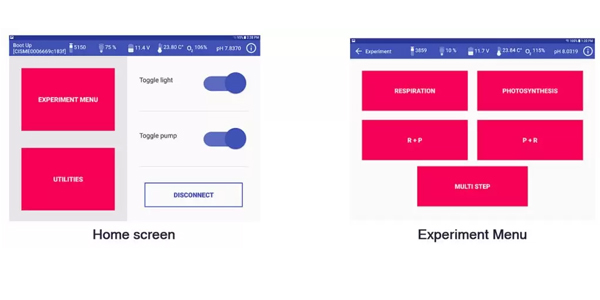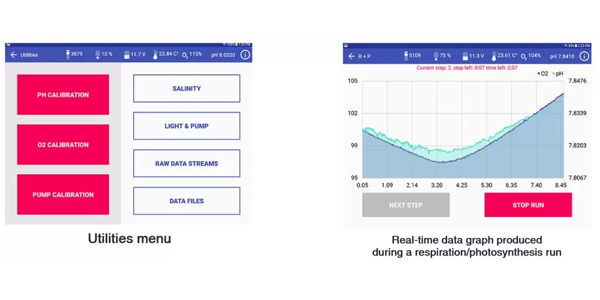CISME - Community In Situ Metabolism:
CISME stands for Community In Situ Metabolism (pronounced ‘kiss-me’ to reflect the gentle interaction between the instrument and the coral/substrate). A diver-portable respirometer developed to make non-destructive and non-invasive measurements of coral metabolic rates in situ under ambient conditions. The system measures changes in oxygen and pH during short incubations in which water flow and light levels are user controlled. Respiration (R) and photosynthesis (P) rates are calculated from concentration changes in oxygen or carbon dioxide within the enclosed volume.
Description
The CISME system is vital for coral health assessment. It may be used with algae and other low-relief benthic substrates. Respiration and photosynthesis can be determined, both based on O2 and CO2 fluxes, from which RQs and PQs can be calculated. Sample loops provide water samples that can be titrated for total alkalinity to calculate calcification rates. The sample loop can also be used to experimentally introduce substances that might affect metabolism (e.g. acidified seawater for ocean acidification studies).
The CISME system measures oxygen fluxes and changes in pH during in situ incubations in which water flow and light levels are controlled by the user. From changes in concentration respiration rate and photosynthesis rate are calculated. A sample loop provides a water sample that can be titrated for total alkalinity (TA) from which calcification rate is calculated. The sample loop can also be used to conduct experiments in which the user introduces substances that might affect coral metabolism (such as acidified seawater for ocean acidification studies).
Components:
- Electronics components are contained in a pressure resistant acrylic Electronics Housing (80 m depth) connected by waterproof cables to the incubation flow-sensor “head”.
- An Incubation Head housing the sensors, pump, LED light source is attached by the user to the coral/substrate surface with special retractors.
- CISME is operated with a proprietary Android app on a Submersible Android Tablet connected to the CISME by a WiFi cable.
- Recirculating incubation volumes are produced by a closed cell foam seal that traps seawater within CISME against low relief surfaces: corals, reef substrates such as turf and coralline algae, settlement plates.
- Non-destructive sampling for massive corals with low rugosity surfaces. Branching corals require sampling.
Features:
- Diver-portable respirometer
- Measures O2 and pH changes in a flow through system
- Water flow rate and light levels set by the user
- Automatic calculations of photosynthesis and respiration
- Uses Android App and submersible tablet
Specifications:
- Measures O2 with Presens® optode and pH with Honeywell DuraFet® electrode at 1 sec intervals.
- Diver Portability: Instrument and underwater tablet together are ca. 5-7 lbs negative UW.
- Programmable flow from 350 to 1200 mL/min; rpm feedback from pump
- Programmable Light levels (PAR): 0 – 2500 µmol photons/m/s
- Programmable incubation routines (R, P, R+P, P+R, Custom multistep); P vs I curves can be pre-programmed
- Removable sample loop volume used to collect incubation water sub-samples or introduce additives
- Incubation volume: 71 mL with no sample loop; 88 mL with a 16 mL sample loop; 120 mL with flow cup
- Optional sample cup for use with coral fragments, algae, small invertebrates and other detached organisms. Core tube adaptor for use in situ
- Designed to maximize data collection by divers: short incubations of 5 to 60 minutes duration, depending on organism and desired measurements. Calcification takes longer than respiration and photosynthesis.
- High capacity external battery power allows up to 8 hours of use before recharging.
- An underwater Android tablets is required for operation. Two options are available.

